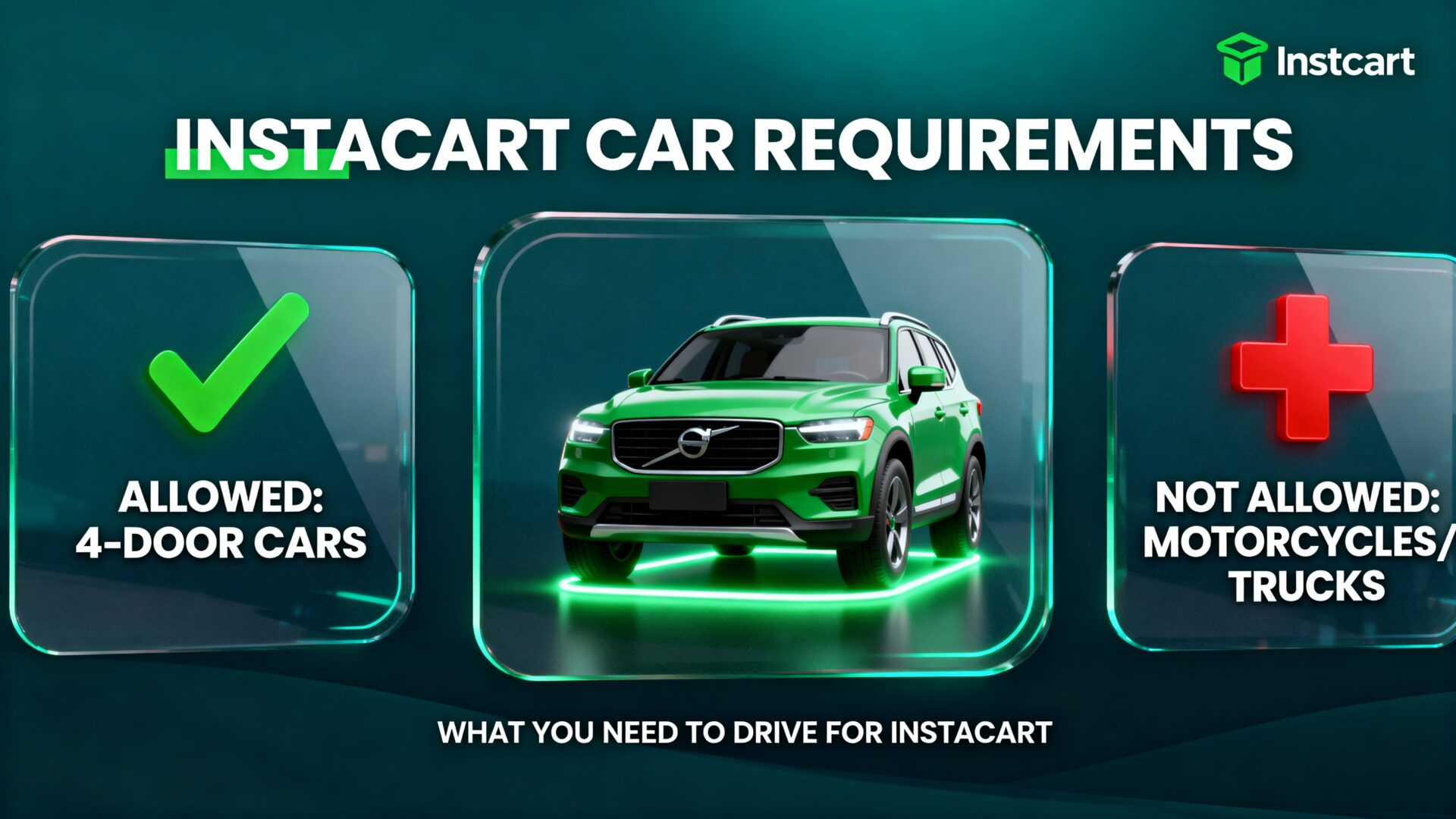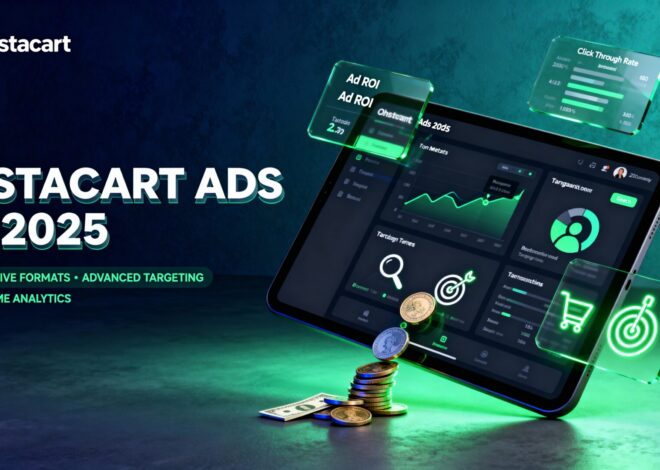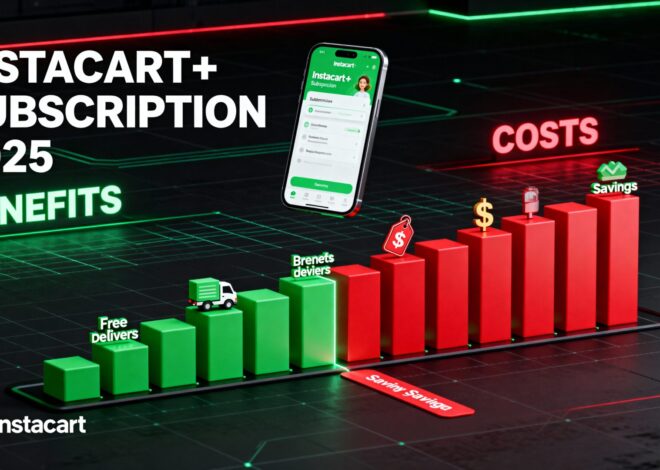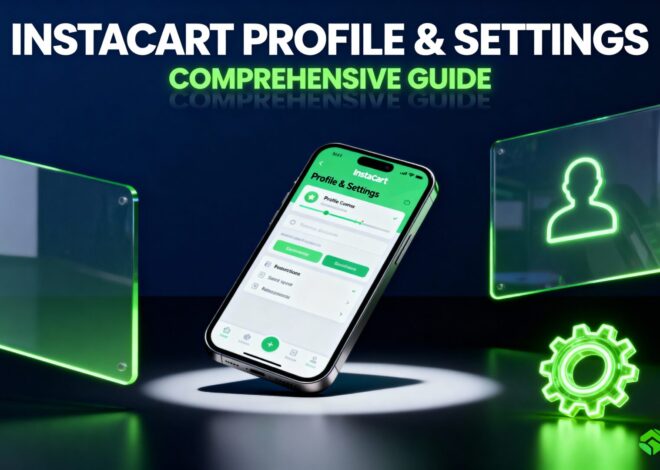
Instacart Car Requirements in 2025: What Shoppers Need to Know
In 2025, Instacart remains a popular gig economy platform for shoppers looking to earn flexible income by fulfilling grocery orders. If you’re considering becoming an Instacart car shopper, understanding the car requirements is crucial, especially since the role often involves deliveries. Instacart distinguishes between two main shopper types: full-service shoppers (who shop and deliver) and in-store shoppers (who only prepare orders inside stores). While in-store shoppers don’t need a vehicle, full-service shoppers do require reliable transportation. Based on official guidelines and recent updates, Instacart does not impose strict specifications like minimum vehicle year or model—unlike some rideshare services—but emphasizes safety, insurance, and reliability. This guide breaks down everything you need to know about Instacart’s car requirements, including eligibility, insurance mandates, tips for success, and any 2025-specific considerations. We’ll draw from official sources and recent analyses to provide a clear picture.
As of October 01, 2025, Instacart continues to expand its shopper network, with over 600,000 active shoppers across North America. Vehicle access is a key factor for full-service roles, enabling deliveries in urban and rural areas alike. Let’s dive in.
Overview of Instacart Shopper Roles and Vehicle Needs
Instacart offers two primary shopper roles, each with different transportation demands:
- Full-Service Shopper: You shop for items in the store and deliver them to customers’ doors. This role requires a vehicle for transporting groceries, navigating traffic, and completing deliveries efficiently. The vast majority of Instacart opportunities fall into this category, as deliveries are core to the service.
- In-Store Shopper: You only work inside the store, selecting and bagging items for pickup or handover to delivery drivers. No vehicle is needed, making this ideal for those without a car or in walkable urban areas. However, these positions are less common and often limited to specific stores.
If you’re aiming for full-service, having a car is non-negotiable for most batches, as walking or public transit isn’t practical for large orders or time-sensitive deliveries. Instacart’s app allows shoppers to accept batches that match their capabilities, but vehicle access opens up more earning potential.
Basic Vehicle Requirements for Full-Service Shoppers
Instacart keeps vehicle requirements straightforward and accessible, focusing on functionality rather than luxury or specifics. Here’s what you need:
- Consistent Access to a Reliable Vehicle: You must have regular access to a car, truck, SUV, or van that’s safe and capable of carrying groceries. There’s no minimum size, but larger vehicles (e.g., sedans with trunks or SUVs) are recommended for bulk orders. Instacart mentions that while they unlock opportunities for shoppers with larger vehicles, they also support those without cars through in-store roles.
- No Strict Year or Model Restrictions: Unlike Uber or Lyft, which often require vehicles from the last 15-20 years, Instacart does not specify a minimum model year. As long as the vehicle is reliable and meets insurance standards, it’s acceptable. Some shoppers report using older cars (e.g., 1997 or newer in certain contexts), but the key is functionality—brakes, tires, and overall condition must ensure safe transport.
- Valid Driver’s License: A current, valid U.S. or Canadian driver’s license is mandatory for full-service shoppers. It must match your application details and be uploaded during signup.
- Alternative Options: In dense urban areas, bikes or scooters may suffice for small deliveries, but cars are preferred for efficiency. Electric vehicles (EVs) are encouraged, with some incentives like gas savings through the Shopper Rewards Card not directly applying but offering indirect benefits via lower operating costs.
Instacart’s lack of rigid specs makes it accessible, but shoppers should consider practicalities: A vehicle with good gas mileage and ample storage (e.g., a hatchback) can maximize earnings by handling more batches.
| Requirement | Details | Why It Matters |
|---|---|---|
| Vehicle Access | Reliable car, truck, SUV, or van | Essential for transporting groceries safely and efficiently |
| Model/Year | No specific restrictions (reliable condition implied) | Allows flexibility for shoppers with older vehicles |
| Driver’s License | Valid U.S./Canadian DL | Legal requirement for driving |
| Alternative Transport | Bike/scooter in select urban areas | For small, local deliveries only |
Insurance Requirements
Insurance is a non-negotiable aspect of Instacart’s car requirements, ensuring protection for you, customers, and the company. Instacart provides supplemental coverage, but you must maintain personal auto insurance.
- Personal Auto Insurance: You need to secure and pay for automobile insurance in amounts consistent with legal requirements in your state or province. This typically includes liability coverage (e.g., $100,000 per person/$300,000 per accident for bodily injury) and property damage. Instacart requires proof during signup or upon request.
- Instacart’s Supplemental Coverage: While on active deliveries (from acceptance to drop-off), Instacart offers additional liability insurance up to $1 million for third-party damages. This covers accidents where you’re at fault but doesn’t include collision or comprehensive for your vehicle—those fall under your personal policy.
- No-Fault Insurance: In states with no-fault laws (e.g., Florida, Michigan), you must carry the required personal injury protection (PIP).
- Verification: Upload your insurance details during the background check process. Instacart may require periodic renewals.
Important: Notify your insurer that you use your vehicle for gig work, as standard policies may not cover commercial use. Some shoppers opt for rideshare endorsements for extra protection. Failure to maintain insurance can lead to deactivation.
2025 Updates and Considerations
As of 2025, Instacart hasn’t introduced new vehicle specs, but there are indirect updates:
- EV and Fuel Efficiency Focus: With rising gas prices, Instacart’s Shopper Rewards Card offers 5-10% cashback on gas, encouraging efficient vehicles.
- Larger Vehicle Incentives: Batches with heavy items may prioritize shoppers with larger vehicles, unlocking higher-paying opportunities.
- Background Check Emphasis: Vehicle-related violations (e.g., DUIs) in the last 7 years can disqualify you, so a clean driving record is key.
- Regional Variations: In Canada, similar rules apply, but check provincial insurance minimums.
These considerations reflect Instacart’s focus on safety amid growing shopper numbers.
Tips for Meeting Instacart’s Car Requirements
- Choose the Right Vehicle: Opt for something fuel-efficient with good storage, like a sedan or SUV. Test with practice runs to handle heavy loads.
- Insurance Check: Get a rideshare endorsement if needed; apps like Stride can help track mileage for deductions ($0.67/mile IRS rate).
- Maintenance: Keep your car in top shape—tires, brakes—to avoid breakdowns that could lower ratings.
- Alternatives if No Car: Apply for in-store roles or multi-app with bike-friendly gigs like DoorDash.
- During Signup: Upload clear photos of your license; expect a 3-10 day background check.
Is Meeting These Requirements Worth It?
For many, yes—Instacart offers $15-26/hour potential with flexibility. But factor in gas (20-30% of earnings) and wear. If your car fits the bill, it’s a low-barrier entry.
Ready to apply? Download the Shopper app and start. Comment your experiences!



